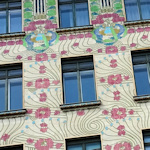
Linke Wienzeile 40 seems like a fairly bland street address. Just another late 19th-century apartment house. Yawn. And then you see the glorious façade of the Majolikahaus, one of Otto Wagner’s most famous buildings….
- Erected in 1898
- Famous for its colourful tiled floral motifs
- Be sure to look at number 38 on the same street, too
- Book a sightseeing tour* in Vienna
- See also:
The Majolica House
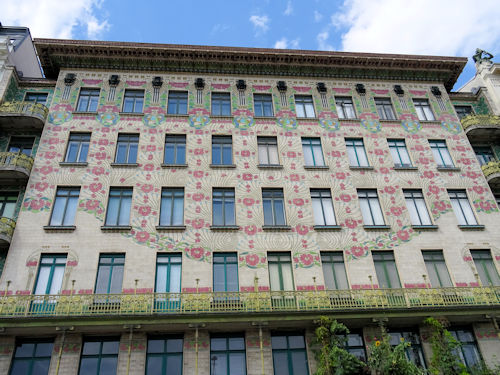
(A view of the front of the house)
The Wienzeile road follows the underground part of the River Wien that slips quietly through Vienna and lures innocent visitors into thinking it’s actually the (rather disappointing) Danube.
House number 40 went up in the late 1890s, around about the time extensive engineering works messed about with the river and opened up a boulevard for urban renewal.
Otto Wagner’s building marks one of those important moments in architectural history. Until then, he’d largely followed the historicism approach that so dominates the older Viennese cityscape.
The Majolikahaus (Majolica House) represents the transition to something new…a more utilitarian approach, but not one lacking in decoration, particularly across its striking façade.
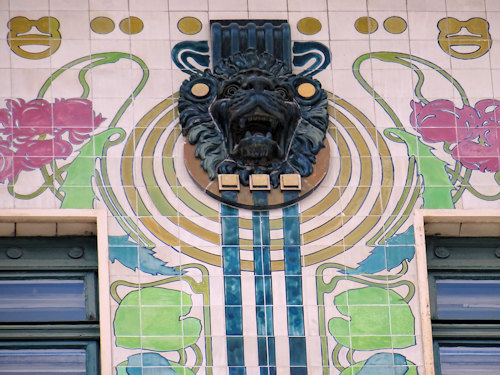
(The Majolikahaus’s coloured tiles)
One newspaper awaiting the removal of the construction scaffolding in 1899 described the house as (my translation):
…a remarkably striking innovation
Just a few weeks later, another newspaper spoke of the building as (again, my translation):
…one of new Vienna’s most beautiful buildings
As such, experts consider it a unique example of Jugendstil architecture.
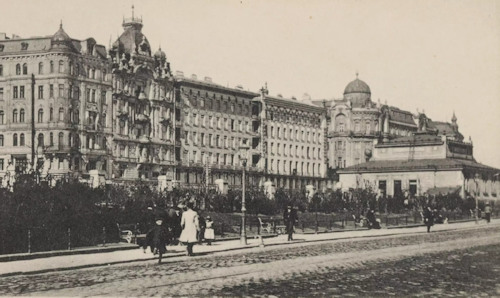
(View across to the Majolikahaus on a postcard printed around 1900 and produced by the Brüder Kohn KG (B. K. W. I.); Wien Museum Inv.-Nr. 185554; excerpt reproduced with permission under the terms of the CC0 licence. Expect more people today. And fewer hats)
That notable façade gives the house its trademark look, with colourful floral motifs designed by Alois Ludwig and implemented using tiles made by the local Wienerberger factory.
Once the largest tile factory in the world, today’s Wienerberger is a major construction company with its own North American division.
The house takes its name from these “Majolika” tiles; majolica historically refers to decorated tin-glazed pottery from Renaissance Italy. Vienna’s MAK museum has a notable collection, which featured in an exhibition back in 2022.
Number 38
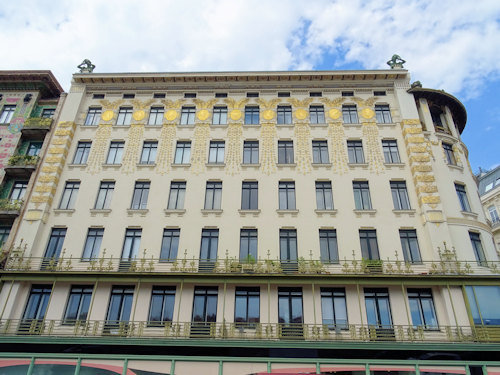
(Linke Wienzeile 38)
Wagner also built the house at Wienzeile 38, which adjoins the Majolica House, as well as the next building after that at Köstlergasse 3.
Kolomon Moser, another famous name in the Vienna Modernism movement, designed the gold ornamentation that grabs the most attention at No. 38. Be sure to view the decorated corner construction, too.
The Köstlergasse house is far more low key. Consider it the blander cheese and biscuits to the patisserie of creativity on the Wienzeile.
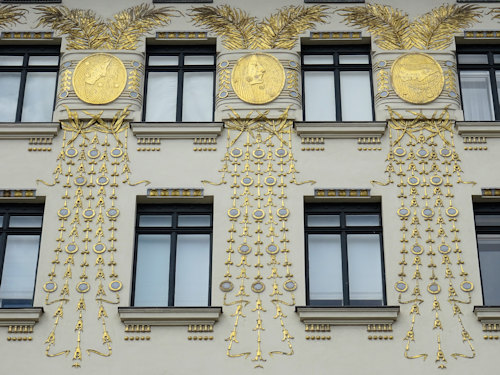
(Kolomon Moser’s ornamentation)
Art and vegetables
The area around the Majolikahaus chips away at the conventional image of Vienna as a city of genteel, palatial surrounds.
The Naschmarkt open-air market dominates the other side of the street, with its small stores, bars, restaurants, and stalls selling food from around the world.
The hubbub of conversation and raucous calls of the market sellers create a more lively atmosphere than you might find in the more traditional old town.
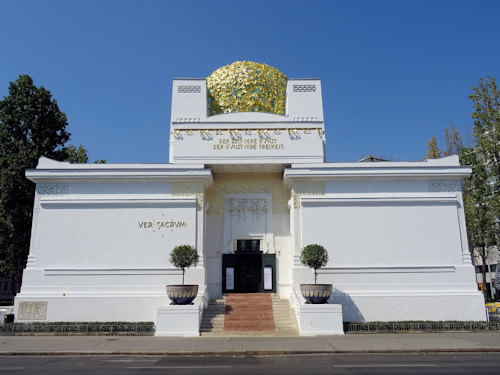
(The Secession with its golden dome)
Walk just a little further up the Wienzeile toward the town centre to find two further historical highlights:
- The Theater an der Wien: now an opera house and one-time host to premieres by the likes of Beethoven and Strauss (II).
- The Secession building: original home of the Secession artists who shook up Viennese art around the time Wagner built the Majolica House. Today, the building houses Gustav Klimt’s Beethovenfries and contemporary art exhibitions.
How to get to the Majolika House
Subway: the Kettenbrückengasse station on the U4 line is practically outside.
You can also walk up from Karlsplatz station (U4, U1 and U2 lines) and enjoy some of the Naschmarkt before you reach the Majolica House.
Address: Linke Wienzeile 40, 1030 Vienna